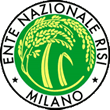TECHNIQUES - THE PROFESSIONAL KITCHEN
The aim of cooking is to render food digestible and to give it a pleasant taste and aroma whilst reducing to a minimun the loss of nutrients.
At the base of the cooking process there is always the application of heat the food so as to produce changes that give it particular organoleptic and characteristic and also modify the physical structure.
The transfer of the heat from the source (gas, coal, wood, oil. etc.) to the can be through diverse vectors such as air, water (either liquid or vapour), metals and their alloys, or fats.
The final result of a cooking process to a combination of several factors: temperature; pressure; the
relative humidity present during cooking. A variation of combinations are used in roasting, stewing, frying, etc.
The ensuing physical modifications to the food can be both positive and negative: positive in that that food is rendered more digestible, tastier and healthier due to the effect of heat on bacteria; negative when the process causes the breakdown of fats into substances toxic to humans, or the loss of principal water-soluble nutrients (vitamins and salts).
The heat can be transmitted in three different ways:
- by conduction. This is the fundamental. system of transferring heat through solids; in the passage of heat from a fire to a saucepan with the resulting heating, and cooking;
- by convection. This is the typical system of transmission in fluids (liquid and gas), as when water is heated in a saucepan;
- by radiation. This is the transmission of heat by infrared rays, as when meat is cooked on the spit or under the grill.
The transmission of heat is influenced by diverse factors, amongst which are: the materials used for the transfer, the method of dissemination (e.g. Water), the area of contact, and the difference in temperature between the two parties involved in the thermal exchange.

